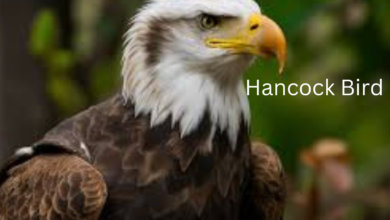Shoebill Stork Sound: Discover the Unique Calls of This Majestic Bird

Introduction to the Shoebill Stork
The Shoebill Stork is a creature that captures the imagination. With its striking appearance and impressive stature, this bird stands out among its avian relatives. But it’s not just the looks that fascinate birdwatchers and nature lovers alike; it’s also the distinctive sounds this majestic bird makes. Known for their ancient calls echoing through wetlands, these vocalizations add another layer to their allure. If you’ve ever been curious about what lies behind those captivating calls, you’re in for a treat. Dive into the world of the Shoebill Stork sound and discover how this extraordinary bird communicates with its surroundings!
Where Can You Find the Shoebill Stork?
The Shoebill Stork, with its striking appearance and remarkable presence, can primarily be found in the wetlands of East Africa. These regions offer the perfect habitat for this unique bird.
Countries like Uganda, Zambia, and South Sudan are hotspots for spotting these majestic creatures. They thrive in swamps and marshlands where they can hunt their favorite prey—mainly fish.
Travelers often embark on expeditions to places like Murchison Falls National Park or the Okavango Delta. Each site presents an opportunity to observe not just the storks but also a rich tapestry of wildlife.
Keep your binoculars ready; patience is key when seeking out this elusive bird amidst dense vegetation. With every sighting comes a chance to witness their fascinating behaviors up close.

The Fascinating Sound of the Shoebill Stork
The Shoebill Stork is known for its striking appearance, but its sounds are equally captivating. The bird emits a range of calls that resonate through the wetlands it inhabits. Their vocalizations can be quite startling, often described as a deep, booming sound.
These calls serve various purposes. From attracting mates to signaling territory, each sound carries significance in their social interactions. Observers have noted how these vocalizations echo across marshes, creating an almost haunting atmosphere.
What sets the Shoebill apart is not just the volume of its calls but their unique timbre. It’s a blend of croaks and grunts that you won’t find in any other bird species. You may even hear them clapping their bill together—a behavior that adds to the symphony of sounds they create.
Listening closely reveals much about this remarkable bird’s life and behaviors, offering a window into its world that few get to experience firsthand.
What Do the Different Calls Mean?
The Shoebill Stork is not just a visual marvel; its sounds are equally compelling. Each call carries significant meaning, reflecting the bird’s emotions and social interactions.
When a Shoebill emits deep, booming sounds, it often signifies territorial claims. This vocalization serves as an unmistakable warning to potential rivals.
Conversely, softer cooing noises indicate comfort or contentment. These gentle calls typically occur during bonding moments with mates or chicks.
In stressful situations, the stork may produce hissing sounds—a clear signal of alarm or discomfort. This reaction can be triggered by nearby threats in their habitat.
Observing these varied calls enhances our understanding of their behavior and communication styles in the wild. Each sound paints a picture of life within this remarkable species’ world, making every encounter unforgettable.
Why is the Sound of the Shoebill Stork Unique?
The Shoebill Stork has a sound that stands apart from other birds. Its low, booming calls echo through the wetlands, creating an almost prehistoric atmosphere.
These vocalizations can vary widely. Some resemble deep grunts or bellowing sounds, while others mimic soft croaks. Each call serves a purpose in communication with their kind.
What makes these sounds particularly intriguing is their rarity and resonance. Unlike many avian species that chirp or sing melodiously, the Shoebill’s calls are raw and primal.
This unique auditory presence plays a crucial role in mating rituals and territorial displays. The depth of their voice resonates through the marshlands, asserting dominance and attracting potential mates.
Listening to a Shoebill stork in its natural habitat feels like stepping back in time to an ancient world where only nature’s most captivating creatures thrive amidst lush landscapes.
How to Record and Preserve Their Calls
Recording the calls of the Shoebill Stork can be a rewarding experience. To capture their unique sounds, invest in a high-quality audio recorder with good sensitivity.
Find a quiet location near their habitat, as background noise can distort recordings. Early mornings or late afternoons are ideal since these birds tend to be more active during those times.
Once you’ve set up your equipment, remain patient and still. The Shoebill may take time to reveal its vocal talents. If possible, use windshields for microphones; this helps reduce unwanted sound interference.
After recording, preserve the files by storing them on multiple platforms—cloud storage is an excellent option for safeguarding against data loss.
Consider tagging your recordings with details such as date and location for easy reference later. This approach allows both amateur enthusiasts and researchers to appreciate these magnificent birds’ calls long after they’ve recorded them.
Conclusion
The Shoebill Stork captivates bird enthusiasts and wildlife lovers alike with its striking appearance and intriguing sounds. The unique calls of this majestic bird not only serve as a means of communication but also add to the rich tapestry of life in their natural habitat. Understanding these vocalizations enhances our appreciation for their role in the ecosystem.
Whether you are planning an adventure to observe them in the wild or simply wish to learn more about their behaviors, embracing all that is extraordinary about the Shoebill Stork sound can deepen your connection with nature. With patience and respect, anyone can enjoy the remarkable experience of hearing these exceptional birds call out across marshlands.
As you explore further into the world of avian wonders, let curiosity lead you on new journeys where every sound tells a story waiting to be discovered.
